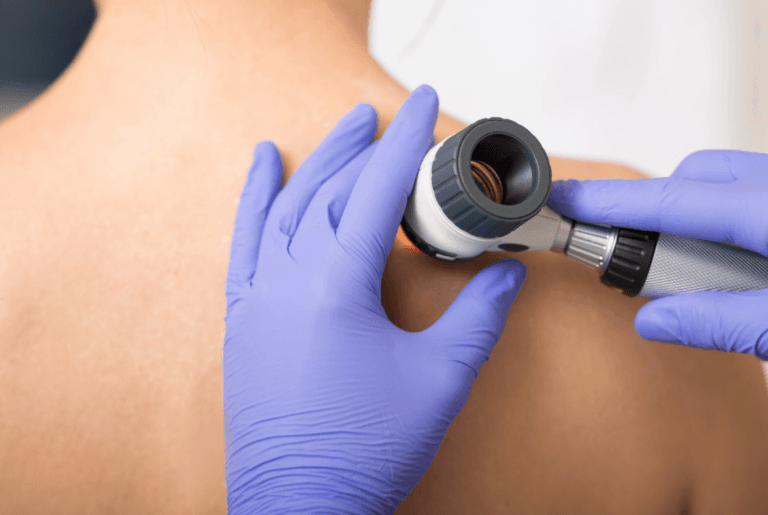According to the American Cancer Society, bladder cancer is the eighth most common cancer in the U.S. Men have a higher risk of bladder cancer than women, although certain risk factors can increase the likelihood in individuals of either sex. Lets take a look at 5 warning signs of bladder cancer and learn more about this condition.
❗5 warning signs of bladder cancer
According to Cancer UK the following are symptoms of bladder cancer:
- Blood in urine: Blood in the urine is the most common symptom of bladder cancer in the early stages. The scientific term for this is hematuria. Streaks of blood in the urine may be seen or the blood may turn your urine brown, pink or even orange, this is known as gross hematuria. The blood isn’t always noticeable and it is impossible to see with the naked eye, this is referred to as microhematuria. Microhematuria is only detected by a urine test.
- Problems passing urine: This could include frequent urination, pain on urinating and a burning sensation on passing urine
- Unexplained weight loss
- Lower back pain or pelvic pain
- Feeling tired and unwell
📝 Causes of bladder cancer
Bladder cancer is caused by changes to the cells of the bladder. The structure of the DNA in the bladder cells change and they grow uncontrollably, producing cancer cells. As the cancer cells grow they progress into a mass called a tumour that can spread to surrounding tissues, lymph nodes and other parts of the body.
Risk factors
Several risk factors have been identified that can significantly increase your risk of developing bladder cancer.
- Smoking: Smoking is the single biggest risk factor for bladder cancer. This is because tobacco contains cancer-causing (carcinogenic) chemicals. People who smoke may be up to four times more likely to develop bladder cancer than non-smokers
- Chemical exposure: This is the second biggest risk factor. Chemicals known to increase the risk of bladder cancer such as aniline dyes, xenylamine, benzidine and o-toluidine. Often people exposed to these chemicals are in manufacturing occupations
- Other risk factors: Other factors that can increase your risk of bladder cancer include having a catheter for a long time, recurrent and long term urinary tract infections (UTIs) and long-term bladder stones
📝 What bladder cancer types are there?
There are three main types of bladder cancer, named after the cells that line the wall of your bladder where the cancer started. Bladder cancer types include:
- Urothelial carcinoma (transitional cell carcinoma): This cancer originates in transitional cells in the inner lining of your bladder wall. About 90% of all bladder cancers are transitional and is the most common bladder cancer in the US. In this cancer type, abnormal cells spread from the inner lining to other layers deep in your bladder or through your bladder wall into fatty tissues that surround your bladder
- Squamous cell carcinoma: Squamous cells are thin, flat cells that line the inside of your bladder. This bladder cancer accounts for about 5% of bladder cancers and typically develops in people who’ve had long bouts of bladder inflammation or irritation
- Adenocarcinoma: Adenocarcinoma cancers are cancers in the glands that line your organs, including your bladder. This is a very rare type of bladder cancer, accounting for 1% to 2% of all bladder cancers
Bladder cancer can also be classed by doctors based on how far it has spread into the bladder wall. You can have either:
- Noninvasive. This bladder cancer is only on or near the surface of your bladder and has not grown into the deeper layers of the bladder wall
- Muscle-invasive. This bladder cancer has grown into a deeper (muscle) layer of the bladder and may have spread into the fatty layers or tissues on organs outside of your bladder
🦠 Bladder cancer diagnosis
Different tests can be used to detect bladder cancer and are often used in combination.
Urinalysis
Your GP can do a urine test for bladder cancer. This is a quick, straightforward test involving dipping a testing stick into a fresh sample of your urine. The sample can then be tested in a laboratory for traces of blood, bacteria or abnormal cells.
Physical examination
Your GP may also carry out a physical examination of your rectum and vagina, as bladder cancer sometimes causes a noticeable lump that presses against them.
If symptoms, physical examination or lab results suggest signs of bladder cancer patients will be referred to a specialist urology team.
Cystoscopy
A cystoscopy is performed by a urologist by inserting a small, narrow tube (cystoscope) through the urethra. The cystoscope has a lens to see the inside of the urethra and bladder, to examine these structures for signs of disease. During cystoscopy, your doctor may pass a special tool through the scope and into your bladder to collect a cell sample (biopsy) for testing.
Imaging tests
A CT scan or an MRI scan may be carried out if the specialist feels they need a more detailed picture of your bladder.
During a CT scan, a contrast dye injected into a vein in your hand eventually flows into your kidneys, ureters and bladder. X-ray images taken during the test provide a detailed view of your urinary tract and help your doctor identify any areas that might be cancer.
Once these tests have been completed, it should be possible to tell you the grade and stage of bladder cancer it is.
🏥 Treatment options for bladder cancer
Bladder cancer treatment largely depends on the stage of bladder cancer the cancer is.
Bladder cancer treatment may include:
- Surgery, to remove the cancer cells. Early bladder cancer can sometimes be treated this way
- Chemotherapy in the bladder or the whole body
- Radiation therapy, to destroy cancer cells. Given by a machine that beams the radiation at the bladder
- Immunotherapy, to trigger the immune system to recognise and attack cancer cells, often used for advanced bladder cancer
- Targeted therapy, to treat advanced cancer when other treatments haven’t helped
In addition to various treatment plans, clinical trials are often suggested in efforts to offer patients latest advances in care, gain insight for future patients and to provide close monitoring.
📝 Conclusion
Some of the signs of bladder cancer are also signs for many other urologic conditions, including urinary tract infections (UTI), enlarged prostate , prostate cancer, kidney stones, or side effects of medication.
The main bladder cancer sign is blood in your urine, but other symptoms include peeing more than usual and pain or burning when passing urine. If you’re experiencing any of these, be sure to contact your healthcare provider.
Sources
- Bladder cancer – NHS
- Bladder Cancer: Symptoms, Causes & Treatment
- Bladder cancer – Symptoms and causes – Mayo Clinic
- Bladder cancer – NHS inform
- Bladder cancer – Cancer Research UK
Medical Disclaimer
NowPatient has taken all reasonable steps to ensure that all material is factually accurate, complete, and current. However, the knowledge and experience of a qualified healthcare professional should always be sought after instead of using the information on this page. Before taking any drug, you should always speak to your doctor or another qualified healthcare provider.
The information provided here about medications is subject to change and is not meant to include all uses, precautions, warnings, directions, drug interactions, allergic reactions, or negative effects. The absence of warnings or other information for a particular medication does not imply that the medication or medication combination is appropriate for all patients or for all possible purposes.








